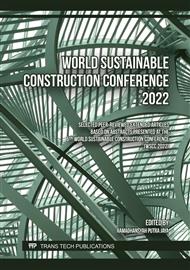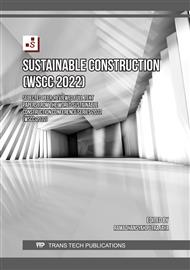p.3
p.25
p.35
p.47
p.57
p.69
p.81
p.91
Durability of Basalt Rebars under Alkaline Environment
Abstract:
Basalt Fibre Reinforced Polymer (BRRP) is a new composite material made from basalt fibre, and resin matrix. It has been introduced to replace steel rebars as the main component of reinforced concrete structures because of their corrosion resistance under aggressive environments. This study investigates the mechanical properties of BFRP and the degradation state exposed to the alkaline environment and compares the corrosion rate with steel rebars. The flexural strength properties are tested as the parameter of mechanical properties. The results show that the flexural strength of BFRP is affected by immersion time (100h, 500h, 1000h) significantly. SEM results show mechanism of corrosion state that cracked resin matrix occurred and EDS results indicate the percentage components especially silicon elements that detected increased after corroded. This research identifies a current knowledge gap and can be serve as a reference point for further studies on the properties of BFRP bars to replace steel bars for safe and economic reinforced concrete structures in alkaline environments.
Info:
Periodical:
Pages:
35-45
Citation:
Online since:
March 2023
Price:
Сopyright:
© 2023 Trans Tech Publications Ltd. All Rights Reserved
Share:
Citation:



